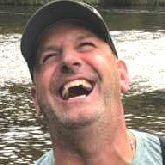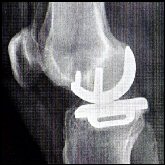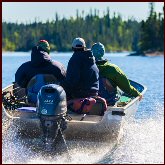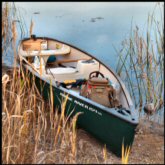by John Jonelis
Kids are dropping dead on the athletic field. Dead! These are our kids—those highly cherished and precocious little brats, grades K-12. Just a few years back we suffered a miserable year—120 deaths according to the Youth Sports Safety Alliance. Here’s a huge problem waiting to get fixed.
I recall Coach Bodle from my high school years. “Hey kid,” he’d say, “Scrape yerself off da ground. Yuh got yer bell rung is all. Shake it off! Da team needs yuh. Get back out there and gimme a hunert ‘n’ twenty percent!” An inspiring speech. Always got results. Players knew the alternative. During my moments of serious academic pursuit, I’d draw Coach Bodle in the margins of my textbook. The result always came out looking like the Frankenstein Monster. This was a guy whose claim to fame was an ejection due to unnecessary roughness in a semi-pro football game. But I made allowances for his furious temper. Had no alternative. Anyway, I figured the guy got his bell run too many times.
That was a different era. Nowadays coaching is a profession. They know better. The liability is huge. People can go to jail. Eighty percent of athletic injuries happen at the high school level. Same old/same old doesn’t cut it and the demand for change rings powerful and loud.
Tonight I get to see Tyrre Burks, founder of Team Interval tell us what he proposes to do about it.
The Field of Play
Last time I saw Burks, he was winning the pitch competition at FFF here in Chicago. He probably deserved that win. When a social entrepreneur presents his company well, he’s gonna get the nod.
But now we’re in the friendly confines of BNC Venture Capital.  I don’t know if you ever had the pleasure, but month after month, BNC—short for Business Network Chicago—puts on the best show in town. That is if you like personal confrontation and plenty of drama like I do. If you want a chance to rake a budding entrepreneur over the coals. If you enjoy watching grown men turn beet red with anger in their eagerness to ask probing business questions. Oh yes, there’s always some smart guy that says, “Wait a sec. Go back three slides. Where’d you get that number?”
I don’t know if you ever had the pleasure, but month after month, BNC—short for Business Network Chicago—puts on the best show in town. That is if you like personal confrontation and plenty of drama like I do. If you want a chance to rake a budding entrepreneur over the coals. If you enjoy watching grown men turn beet red with anger in their eagerness to ask probing business questions. Oh yes, there’s always some smart guy that says, “Wait a sec. Go back three slides. Where’d you get that number?”
The beauty of the system at BNC is Len Bland’s five magic questions. Answer all five and you’ve probably got a sound business plan. Dazzling the throngs with pizzazz doesn’t cut it here. You must address the tough stuff. That keeps everybody in the room at attention because the crowd gets grilled on some of this too.
 The Q&A can get a bit hot. But tonight, through it all, Tyrre Burks remains poised. Informed. Confident. Pretty much indomitable. He’s tall, fit, and stands proud. Somehow, the guy manages to seem humble about it too. I guess professional sums it up.
The Q&A can get a bit hot. But tonight, through it all, Tyrre Burks remains poised. Informed. Confident. Pretty much indomitable. He’s tall, fit, and stands proud. Somehow, the guy manages to seem humble about it too. I guess professional sums it up.
And why not? This is a man that knows his business. Burks played Pro Football—a career plagued with injuries—so he understands this problem on the personal level. He teaches High School, so he knows the weaknesses in the current system. I see passion, and passion gets results. The man is on a mission bigger than himself—Full reporting of childhood sports injuries. And he seems to know precisely how to make it happen. As he unpacks his plan, I find myself hoping he’s right.
Lousy Records
The way we record injuries just stinks. Most go unreported. Records are sketchy.  Many teams don’t even hire trainers. Ambulances get called too late. Disaster strikes and parents bite their nails waiting for information.
Many teams don’t even hire trainers. Ambulances get called too late. Disaster strikes and parents bite their nails waiting for information.
Here we are in the mobile information age, surrounded by advanced medical technology. So what do we do? That’s right—we drop the ball. Only 18% of sports injuries get documented at all. Eighteen percent! There’s no meaningful data from ages 8-18! I don’t know about you, but statistics like those get my attention.
Consider it from the coach’s perspective. I think we can agree that nobody wants players dropping dead on the field of play. Don’t you think a coach wants to know if a kid had five concussions since his Pop Warner days? Or a heart problem? You better believe it! What about college programs? Do you suppose a recruiter would like to review the childhood injury records for prospective scholarship athletes? Well, d’ya think?
So how do we get that done?
Right here at BNC, Tyrre Burks is giving us his answer. Trainers will log the injuries. If there’s no trainer on staff, then the coaches. Trainers? Coaches? That takes me by surprise and seems to raise the emotional level of the entire room. Objections get raised right away.
How to Answer Stupid Questions
Bill Blaire once coached football and wrestling—till they politely asked him to leave. When he stands up to ask a question, his bulk blocks half the room. His deep rumble rattles the light fixtures: “Dem coaches ain’t dumb,” he says with all sincerity. “And reportin’ injuries is gonna turn out real dumb fer a coach.” When asked to elaborate, he indicates in so many words that it opens a guy up to liability.
 Turns out, according to Tyrre Burks, the reality is just the opposite. Nobody wants to get sued. That’s a huge incentive, especially for trainers and coaches today. It occurs to me that reporting absolutely everything might just be the best CYA maneuver in the business. And maybe Burks is right. Given the tools to do it quickly and immediately, a coach will dutifully log every incident, if not for the player’s benefit, at least to protect the old career.
Turns out, according to Tyrre Burks, the reality is just the opposite. Nobody wants to get sued. That’s a huge incentive, especially for trainers and coaches today. It occurs to me that reporting absolutely everything might just be the best CYA maneuver in the business. And maybe Burks is right. Given the tools to do it quickly and immediately, a coach will dutifully log every incident, if not for the player’s benefit, at least to protect the old career.
Sheldon Tommygun looks like he’s about to burst a blood vessel and he finally gets called to speak. “An athletic staff,” he says in his incongruously cultured voice, “isn’t qualified to make a medical diagnosis.”
Turns out, when you think about it, any trainer, any coach knows when a player gets his bell rung or hurts a knee. When follow-up is required, the doctor’s diagnosis will appear on the athlete’s and the school’s records. Mission accomplished. Burks predicts that we’re moving to legislation to mandate this in 48 months. If that happens, there’ll be a land grab for the data. And don’t forget the goal—to save over a hundred lives a year.
Janet Case used to teach school and I’ve been after her to write for this journal. “Coaches are disinclined to fill out detailed injury reports,” she says with admirable precision. “They are overworked and ill-equipped to carry out such a function. How do you turn an onerous task into an immediate action?” Yeah—that’s the question on everybody’s mind, but maybe not quite in those words.
Turns out it’s a simple pictorial interface.  All a coach or trainer needs to do is whip out his phone or tablet and highlight an area of the body where the injury occurred, and add a voice memo. The system instantly alerts all the right people from parents to administrators to ambulance and doctors. It’s tied to an electronic tracking system that organizes the records and documents. This is the first universal health record system for athletic injuries. Coaches can make informed decisions about the status of individual players and the injuries that accumulate in other sports. Administrators get a birds-eye view of the health of all their athletes and can analyze trends and re-direct policy using the data driven dashboard. For college programs, it’s like a CarMax report for players. “Later on,” says Burks, “Insurance companies will get involved.”
All a coach or trainer needs to do is whip out his phone or tablet and highlight an area of the body where the injury occurred, and add a voice memo. The system instantly alerts all the right people from parents to administrators to ambulance and doctors. It’s tied to an electronic tracking system that organizes the records and documents. This is the first universal health record system for athletic injuries. Coaches can make informed decisions about the status of individual players and the injuries that accumulate in other sports. Administrators get a birds-eye view of the health of all their athletes and can analyze trends and re-direct policy using the data driven dashboard. For college programs, it’s like a CarMax report for players. “Later on,” says Burks, “Insurance companies will get involved.”
Loop Lonagan has the floor. “Yer gonna run into all kindsa privacy issues. This bird ain’t never gonna fly.”
But it turns out Burks system is up and running in 16 school systems.  He’s deep in negotiation with more. It’s already built with with role permissions that prevent privacy issues. This thing is moving and moving fast.
He’s deep in negotiation with more. It’s already built with with role permissions that prevent privacy issues. This thing is moving and moving fast.
Warren D. Mink calls out, “Go back three slides. What’s that number?” A lot of time gets spent in a group effort at basic arithmetic. When the argument finally winds down, I’m too confused to know if their sums are correct.
I walk to the front, congratulate Tyrre Burks, trade business cards, and then escape for my train. Later that week I learn Burks landed another huge contract. Yes, this is moving very fast.
Contacts & Credits
TEAM INTERVAL – www.teaminterval.com
TYRRE BURKS – Tyrre@TeamInterval.com
BNC Venture Capital – www.bnchicago.org
FFF – fundingfeedingfrenzy.com
DATA – www.YouthSportsSafetyAlliance.org
PHOTOGRAPHY – John Jonelis, Team Interval
.
Chicago Venture Magazine is a publication of Nathaniel Press www.ChicagoVentureMagazine.com Comments and re-posts in full or in part are welcomed and encouraged if accompanied by attribution and a web link. This is not investment advice. We do not guarantee accuracy. It’s not our fault if you lose money.
.Copyright © 2014 John Jonelis – All Rights Reserved
.
.











































































































































































